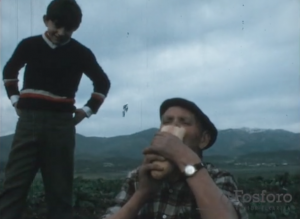
Después de que su padre parte al trabajo, un pequeño niño debe llevarle pan y vino. Sin embargo, el niño se toma mucho tiempo vistiéndose y jugando con una botella en un lago. Su madre le pide apurarse y en el camino el niño bebe el vino y rellena la botella con agua, se esconde para ver a una pareja besarse, le da a su padre el pan y después interrumpe a unos niños jugando. Mientras juegan a esconderse, él se lleva a una niña lejos y la besa, para después seguir huyendo y esconderse en un establo momentáneamente. Al caminar hacia las vías del tren, piensa en todo lo que ha hecho, y se acuesta ahí con los ojos vendados pero al reflexionar sobre sus acciones decide regresar a casa con su madre.
After his father leaves for work, a little kid has to bring him bread and wine. However he takes his time getting dressed and playing with a bottle in a lake, then his mother prompts him to hurry and on the road he drinks the wine and re-fills the bottle with water, he watches a couple kissing, then he gives his father the bread and interrupts some kids playing, then while playing hide and seek he takes a girl far away and kisses her and he keeps running away, staying hidden in a barn for a while. Then he walks to the train tracks and starts thinking of all he has done, so he lays there with his eyes blind folded but after thinking about his doings he goes back home to his mother.
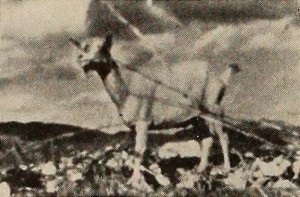
"Vida Pacoima, a two reel study of Mexican life in the southern California village of Pacoima, by Randolph B. Clardy, represents a near miracle in portraying a mood in motion pictures. Whether one likes (i.e., is entertained by) the film or not, there is no gainsaying the amazing emotional effect of its intelligent and beautiful cinematography. Here, in easy going and seemingly unstudied sequence, is the utter aimlessness of the slatternly village and its defeated people. Chickens and children, billy goats and black gowned old women, these are the life of Pacoima. Mr. Clardy has caught them all—either dreaming or drowsy in the sunshine—and presents them with a telling reiteration against the background of their broken homes and through the slats of their sagging fences. A sensuous delight, the photography is as nearly perfect as circumstances would permit, outstripped only by an unerring and often ineffable sense of motion picture continuity. In Vida Pacoima, Mr. Clardy is an artist to his finger tips and a movie maker down to the ground." Movie Makers, Dec. 1938, 617.
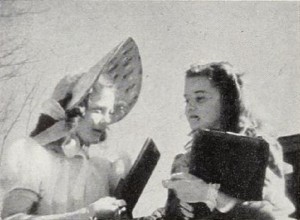
"The 246 year old Voorlezer House, believed to be the oldest elementary school building still standing in the United States, is located on Staten Island, N. Y. It has long been an interesting landmark, but it is now preserved for posterity in Kodachrome by the master hand of Frank E. Gunnell. On the occasion of the one hundredth anniversary of New York City's present school system, this site was selected for one part of the ceremonies, and eighteen girls and boys, in costumes designed from illustrations in Godey's Lady's Book, went through a typical day, recreated to appear as it might have been in 1842. Mr. Gunnell's technically superb nature films are well known, but in The Voorlezer's House there is much more than immaculate cinematography. There is lighting that fits the mood of days gone by, and there is a sensitive faculty in the direction of a group of children that is appealing. The film is simple in that the continuity is chronological, but the charm of the Gunnell touch was never more telling than in this picture. If ever a potentially dull film subject was made to glow and come alive, this is the time." Movie Makers, Dec. 1942, 506.
A film capturing slices of everyday life, narrativizing Mori’s small children playing with each other.
"Whither Flowing," depicts the nervous evils caused by parents in the thoughtless upbringing of children. The drama was compactly told, well acted and directed, and was marked by unusual photography." Photoplay, Nov. 1929, 67. "...Whither Flowing is a psychological study of hysteria.... Dr. Heise's Whither Flowing won second award in the dramatic division of the recent Photoplay Magazine contest...” Movie Makers, Feb. 1930, 104.
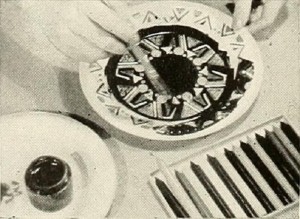
"To the fascinating subject of finger painting, Willard Pictures has added its flawless color photography, and the result is Young America Paints. Finger painting is a subject highly suited to movies, in so far as the actual painting is concerned; but, when it comes to showing the results on such an extensive scale as was necessary in this film, a good deal of cinematic ingenuity is needed. Clear, direct presentation marks the entire picture, and the excellent narrative is powerful although unobtrusive. Fresh and interesting angles, together with unconventional lighting methods, serve to give the picture a pace and verve that the subject requires. This movie accomplishes its purpose in a most satisfactory manner, for nobody could see the film without feeling a strong urge to start finger painting for himself. That in itself is the greatest tribute that can be paid to a persuasive type of motion picture." Movie Makers, Dec. 1940, 601.
The story follows a little girl named “Dokhtar Bas” who catches a frog for her mother to cut open and put on her father’s infected knee injury. The next day the wound is disinfected and her father goes back to work in the wilderness. Dokhtar Bas looks at the dried up corpse of the frog and asks her mother if her father is truly healed now. Later in an attempt to revive the frog she first puts it in water, then catches another frog and like her mother cuts it open and places it on the dead frog’s corpse, tying them together. Checking the bandaged bundle the next morning she discovers two dead frogs and she asks her mother again whether her father really is completely healed now.
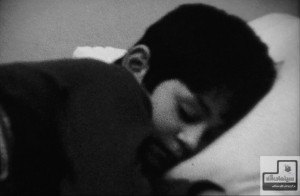
The film follows a group of children living in the same alley. The garbage truck arrives every day disrupting their dreams. The sleepy children are forced to take the garbage out every time and play in the alley after the garbage are taken. The garbage truck stops coming to their alley, allowing them to finally sleep and dream for longer but also results in the neighbours throwing garbage in the alley, stopping the children from playing together.
Total Pages: 15